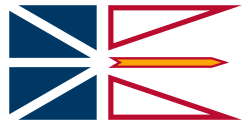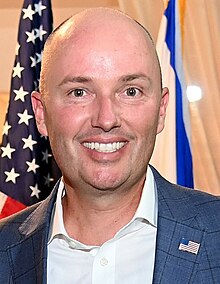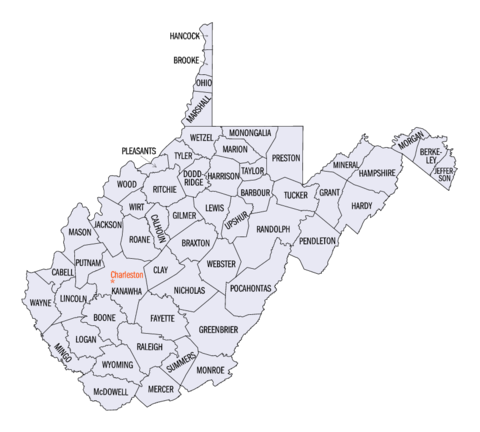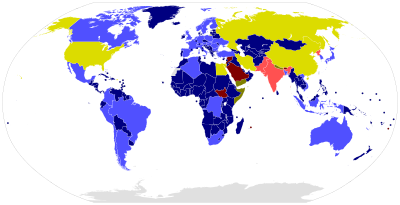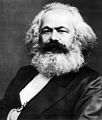Portal:Politics
| Main | Topics and categories | Tasks and projects |
The Politics portal
Politics (from Ancient Greek πολιτικά (politiká) 'affairs of the cities') is the set of activities that are associated with making decisions in groups, or other forms of power relations among individuals, such as the distribution of resources or status. The branch of social science that studies politics and government is referred to as political science.
It may be used positively in the context of a "political solution" which is compromising and non-violent, or descriptively as "the art or science of government", but also often carries a negative connotation. The concept has been defined in various ways, and different approaches have fundamentally differing views on whether it should be used extensively or in a limited way, empirically or normatively, and on whether conflict or co-operation is more essential to it.
A variety of methods are deployed in politics, which include promoting one's own political views among people, negotiation with other political subjects, making laws, and exercising internal and external force, including warfare against adversaries. Politics is exercised on a wide range of social levels, from clans and tribes of traditional societies, through modern local governments, companies and institutions up to sovereign states, to the international level.
In modern nation states, people often form political parties to represent their ideas. Members of a party often agree to take the same position on many issues and agree to support the same changes to law and the same leaders. An election is usually a competition between different parties.
A political system is a framework which defines acceptable political methods within a society. The history of political thought can be traced back to early antiquity, with seminal works such as Plato's Republic, Aristotle's Politics, Confucius's political manuscripts and Chanakya's Arthashastra. (Full article...)
Selected article
The Latin American Boom (Boom latinoamericano) was a literary movement of the 1960s and 1970s when the work of a group of relatively youthful Latin American novelists became widely circulated in Europe and throughout the world. The Boom is most closely associated with Julio Cortázar of Argentina, Carlos Fuentes of Mexico, Mario Vargas Llosa of Peru, and Gabriel García Márquez of Colombia; but it also brought fame to older writers like Jorge Luis Borges, Pablo Neruda and Ernesto Sábato. Influenced by European and North American Modernism, but also by the Latin American Vanguardia movement, these writers challenged the established conventions of Latin American literature. Their work is experimental and, owing to the political climate of the Latin America of the 1960s, often very political. "It is no exaggeration", critic Gerald Martin writes, "to state that if the Southern continent was known for two things above all others in the 1960s, these were, first and foremost, the Cuban Revolution and its impact both on Latin America and the Third World generally, and secondly, the Boom in Latin American fiction, whose rise and fall coincided with the rise and fall of liberal perceptions of Cuba between 1959 and 1971." The sudden success of the Boom authors was in large part because their works were among the first Latin American novels to be published in Europe, by publishing houses such as Barcelona's avant-garde Seix Barral in Spain. Indeed, Frederick M. Nunn writes that "Latin American novelists became world famous through their writing and their advocacy of political and social action, and because many of them had the good fortune to reach markets and audiences beyond Latin America through translation and travel—and sometimes through exile."
Featured picture

Annkathrin Kammeyer (born 1990) is a German Social Democratic politician. She became a Member of the Hamburg Parliament on 7 March 2011, the youngest person ever elected to that body.
Members are first elected to the legislature during general elections. General elections must be conducted every five years from the date of the last election, but the premier may ask for early dissolution of the legislative assembly. An election may also happen if the Governing party loses the confidence of the legislature, by the defeat of a supply bill or tabling of a confidence motion. (Full article...)
The Mayor of Pichilemu is an elected politician who is the head of the executive branch of government of the commune of Pichilemu, Libertador General Bernardo O'Higgins Region, Chile. The mayor presides over the local city council, composed of six members, and serves as the civic representative of the commune. The mayor is popularly elected in a municipal election, by simple majority. The office is held for a four-year term without term limits.
Forty different individuals, including acting mayors, have held the office of mayor since the commune of Pichilemu was created in December 1891. José María Caro Martínez, elected in 1894, was the inaugural mayor of the commune, and served for almost four consecutive terms, interrupted by his resignation in 1905. The current mayor is independent Cristian Pozo Parraguez, who was elected in May 2021 and took office on that 28 June. (Full article...)
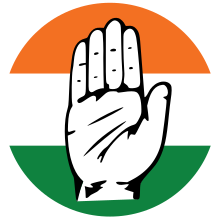
The president of the Indian National Congress is the chief executive of the Indian National Congress (INC), one of the principal political parties in India. Constitutionally, the president is elected by an electoral college composed of members drawn from the Pradesh Congress Committees and members of the All India Congress Committee (AICC). In the event of any emergency because of any cause such as the death or resignation of the president elected as above, the most senior general secretary discharges the routine functions of the president until the Working Committee appoints a provisional president pending the election of a regular president by the AICC. The president of the party has effectively been the party's national leader, head of the party's organisation, head of the Working Committee, the chief spokesman, and all chief Congress committees.
After the party's foundation in December 1885, Wyomesh Chandra Banerjee became its first president. From 1885 to 1933, the presidency had a term of one year only. From 1933 onwards, there was no such fixed term for the president. During Jawaharlal Nehru's premiership, he rarely held the Presidency of INC, even though he was always head of the Parliamentary Party. Despite being a party with a structure, Congress under Indira Gandhi did not hold any organisational elections after 1978. In 1978, Gandhi split from the INC and formed a new opposition party, popularly called Congress (I), which the national election commission declared to be the real Indian National Congress for the 1980 general election. Gandhi institutionalised the practice of having the same person as the Congress president and the prime minister of India after the formation of Congress (I). Her successors Rajiv Gandhi and P. V. Narasimha Rao also continued that practice. Nonetheless, in 2004, when the Congress was voted back into power, Manmohan Singh became the first and only prime minister not to be the president of the party since establishment of the practice of the president holding both positions. (Full article...)
The Soviet Union was established in 1922. However, the country's first constitution was only adopted in 1924. Before that time, the 1918 Constitution of the Russian Soviet Federative Socialist Republic functioned as the constitution of the USSR. According to the 1918 Constitution, the All-Russian Central Executive Committee (CEC), whose chairman was head of state, had the power to determine what matters of income and taxation would go to the state budget and what would go to the local soviets. The CEC could also limit taxes. In periods between convocations of the Congress of Soviets the CEC held supreme power. In between sessions of the Congress of Soviets the CEC was responsible for all the affairs of the Congress of Soviets. The CEC and the Congress of Soviets was replaced by the Presidium and the Supreme Soviet respectively by several amendments to the 1936 Constitution in 1938. (Full article...)

Jesus College is one of the constituent colleges of the University of Oxford in England. The college was founded in 1571 by Queen Elizabeth I at the request of Hugh Price, a Welsh clergyman, who was Treasurer of St David's Cathedral in Pembrokeshire. The college still has strong links with Wales, and about 15% of students are Welsh. There are 340 undergraduates and 190 students carrying out postgraduate studies. Women have been admitted since 1974, when the college was one of the first five men's colleges to become co-educational. Old members of Jesus College are sometimes known as "Jesubites".
Harold Wilson studied at Jesus College from 1934 to 1937, and was later the Prime Minister of the United Kingdom during two periods (from October 1964 to June 1970, and from March 1974 to April 1976). More than 30 other Members of Parliament (MPs) have been educated at the college, from Sir John Salusbury who was elected as MP for Denbighshire in 1601 to Theresa Villiers who was elected as MP for Chipping Barnet in 2005. Sir Leoline Jenkins, who became a Fellow and later the Principal of the college, was Secretary of State for the Northern Department from 1680 to 1681 and Secretary of State for the Southern Department from 1681 to 1685. Sir William Williams served as Speaker of the House of Commons from 1680 to 1685 and as Solicitor General for England and Wales from 1687 to 1689. Evan Cotton was MP for Finsbury East before holding the position of President of the Bengal Legislative Council from 1922 to 1925. Several Welsh politicians have been educated at the college, some representing constituencies in Wales (such as Sir John Wogan, representing Pembrokeshire at various times between 1614 and 1644) and others working outside Parliament, such as D. J. Williams, a co-founder of the Welsh nationalist party Plaid Cymru. (Full article...)
The governor of Delaware (known as the president of Delaware from 1776 to 1792) is the head of government of Delaware and the commander-in-chief of the state's military forces. The governor has a duty to enforce state laws, and the power to either approve or veto bills passed by the Delaware Legislature, to convene the legislature, and to grant pardons, except in cases of impeachment, and only with the recommendation of the Board of Pardons.
There have been 71 people who have served as governor, over 74 distinct terms. Three (Joseph Haslet, Charles Polk Jr. and Elbert N. Carvel) served non-consecutive terms. Additionally, Henry Molleston was elected, but died before he could take office. Only four governors have been elected to two consecutive terms, with the longest-serving being Ruth Ann Minner, who was elected twice after succeeding to the office, serving a total of just over eight years. The shortest term is that of Dale E. Wolf, who served 18 days following his predecessor's resignation; David P. Buckson served 19 days under similar circumstances. The current governor is Democrat John Carney, who took office on January 17, 2017. (Full article...)

The Minister of Transport (Norwegian: Samferdelsministeren) is a Councillor of State and Chief of the Norwegian Ministry of Transport. The post has been held by Jon-Ivar Nygård of the Labour Party since 2021. The ministry is responsible for policy and public operations within postal services, telecommunications, civil aviation, public roads, rail transport and public transport, including ferry services that are part of national roads and coastal transport infrastructure. The ministry has seven agencies and four limited companies, including the airport operator Avinor, railway operator Vy, the Norwegian National Rail Administration, the Norwegian Public Roads Administration and Norway Post. There are also inspectorates and authorities related to accident investigation, civil aviation, and railways.
The position was created with the ministry on 22 February 1946, when Nils Langhelle (Labour) was appointed. The ministry and minister position were split out from the Ministry of Labour. Twenty-eight people have held the position, representing six parties. Sixteen people have represented the Labour Party, five the Centre Party, two each the Christian Democratic Party, the Conservative Party and the Liberal Party and one for the Progress Party. The longest-sitting minister is Kjell Opseth (Labour) who sat a week short of six years. Lars Leiro (Centre) sat for only four weeks, giving him the shortest tenure. He both succeeded and preceded Trygve Bratteli, the only person to have held the position twice and the only officeholder to later become Prime Minister. (Full article...)
The current Swiss Federal Councillors are: Guy Parmelin (first elected in 2015), Ignazio Cassis (first elected in 2017), Viola Amherd (first elected in 2018), Karin Keller-Sutter (first elected in 2018), Albert Rösti (first elected in 2022), Élisabeth Baume-Schneider (first elected in 2022), and Beat Jans (first elected in 2023) (Full article...)
Selected quote
Selected biography

Eli Daniel Bebout (born October 14, 1946) is an American athlete and politician who served in the Wyoming House of Representatives from a multi-member district in Fremont County and the 55th district from 1987 to 2001, and later served in the Wyoming Senate from the 26th district 2007 to 2021, as a member of the Democratic and Republican parties. He was the first person to serve as both Speaker of the Wyoming House of Representatives and President of the Wyoming Senate
Did you know (auto-generated) -

- ... that before becoming the mayor of Medan, Indonesia, Agus Salim Rangkuti acted in movies and oversaw a real-life political prison camp?
- ... that one of the arguments made by the Simla Deputation for increasing Muslim representation in Indian politics was that they had ruled India under the Mughal Empire?
- ... that Nirmalendu Goon shared his doubts about Sheikh Mujibur Rahman's political decisions during the 1969 East Pakistan mass uprising in his poem Huliya?
- ... that in his first month in the job, Wali Mohammad Itoo suspended all 23 opposition representatives when they questioned his integrity as the speaker of the Jammu and Kashmir Legislative Assembly?
- ... that after a career as political journalist, Peter Merseburger wrote biographies of Der Spiegel founder Rudolf Augstein and chancellor Willy Brandt?
- ... that after being arrested for organizing a general strike in 1920, S. Girinis was sent to the Soviet Union following a Soviet-Lithuanian exchange of political prisoners?
More did you know...
- ...that the first phase of Mitt Romney's 2012 U.S. presidential campaign was announced via a video message?
- ...that the National Assembly of Azerbaijan was the first secular republican parliament in the Muslim world?
- ...that in world-system theory, sociologists debate whether two world-systems have ever existed during the same period?
- ...that former Republican California State Senator Becky Morgan served on the Board of Trustees of both her alma maters, Stanford University and Cornell University?
- ...that the UK's Workers Socialist Federation began as a suffragette group?
- ...that tiao-kuai is the quasi-federal administration system in China?
In this month
- May 5, 2005 – A General Election in the United Kingdom sees Tony Blair's Labour government returned to office with a reduced majority of 66.
- May 14, 1948 – The Declaration of Independence of Israel is made.
- May 18, 1948 – The first Legislative Yuan of the Republic of China officially convenes in Nanking.
News and Current events
- August 11: 4 local government areas in New South Wales, Australia locked down after COVID-19 case
- August 11: Australia: AstraZeneca vaccine access expanded by Victorian government
- August 1: Australia: Victorian lockdown lifted
- July 29: Tunisia's president dismisses prime minister, suspends parliament
- July 25: Australia: Wikinews interviews Reg Kidd, mayor of the City of Orange, about COVID-19 lockdown and local government
- July 23: South Australia enters week-long lockdown to contain COVID-19 Delta variant spread
- July 21: Technological University Dublin senior lecturer Dr Lorcan Sirr speaks to Wikinews on housing market in Ireland
- July 21: Three rural councils in New South Wales, Australia enter 7-day lockdown
- July 21: Australia: Victoria lockdown extended by a week with 85 active cases recorded
- July 15: California governor signs new state budget, eligible Californians to get stimulus payments
Topics and categories
General images
Related portals
Associated Wikimedia
The following Wikimedia Foundation sister projects provide more on this subject:
-
Commons
Free media repository -
Wikibooks
Free textbooks and manuals -
Wikidata
Free knowledge base -
Wikinews
Free-content news -
Wikiquote
Collection of quotations -
Wikisource
Free-content library -
Wikiversity
Free learning tools -
Wiktionary
Dictionary and thesaurus
Sources
More portals
- Portals with triaged subpages from June 2018
- All portals with triaged subpages
- All portals
- Portals with no named maintainer
- Random portal component with 41–50 available subpages
- Random portal component with 16–20 available image subpages
- Automated article-slideshow portals with 101–200 articles in article list
- Random portal component with 11–15 available subpages
- Random portal component with over 50 available subpages
- Politics portals
- Politics portal
- Politics


